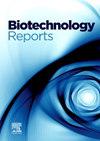Investigation and optimization of DNA isolation efficiency using ferrite-based magnetic nanoparticles
Q1 Immunology and Microbiology
引用次数: 0
Abstract
DNA isolation is a crucial step in many molecular biological applications for diagnostic and research purposes, like detection of infectious diseases or gene expression studies. However, due to the requirement of toxic reagents in traditional procedures and the high expenses of commercial kits, the use of magnetic MNP-based DNA isolation is becoming more widespread. In this study, different ferrite containing MNPs (MnFe2O4, MnFe2O4-NH2, MgFe2O4, MgFe2O4-NH2 NiFe2O4, NiFe2O4-NH2) are examined and compared in their pDNA isolation efficiency. Among the tested nanoparticles, we document the use of NiFe2O4 and its amine-functionalized form for the first time. Three protocols for the isolation of pDNA are optimized for each type of nanoparticle and the best protocol is selected based on the quantity, quality and integrity of the extracted DNA. Plasmid samples extracted with the MNPs are transformed into competent bacterial cells and further tests are performed to recover genomic DNA from bacterial cells, leading to the development of another protocol. Bacteria-spiked blood serum samples are produced to extract DNA from a more complex biological matrix.

铁氧体基磁性纳米颗粒DNA分离效率的研究与优化
DNA分离是用于诊断和研究目的的许多分子生物学应用的关键步骤,例如检测传染病或基因表达研究。然而,由于传统方法对有毒试剂的要求和商业试剂盒的高昂费用,基于磁性mnp的DNA分离的使用越来越广泛。本研究考察了不同铁氧体MNPs (MnFe2O4、MnFe2O4- nh2、MgFe2O4、MgFe2O4- nh2、NiFe2O4、NiFe2O4- nh2)对pDNA的分离效率。在测试的纳米颗粒中,我们首次记录了NiFe2O4及其胺功能化形式的使用。针对不同类型的纳米颗粒,优化了三种分离pDNA的方案,并根据提取DNA的数量、质量和完整性选择了最佳方案。用MNPs提取的质粒样本转化为有能力的细菌细胞,并进行进一步测试以从细菌细胞中恢复基因组DNA,从而制定另一种方案。细菌添加的血清样本用于从更复杂的生物基质中提取DNA。
本文章由计算机程序翻译,如有差异,请以英文原文为准。
求助全文
约1分钟内获得全文
求助全文
来源期刊

Biotechnology Reports
Immunology and Microbiology-Applied Microbiology and Biotechnology
CiteScore
15.80
自引率
0.00%
发文量
79
审稿时长
55 days
期刊介绍:
Biotechnology Reports covers all aspects of Biotechnology particularly those reports that are useful and informative and that will be of value to other researchers in related fields. Biotechnology Reports loves ground breaking science, but will also accept good science that can be of use to the biotechnology community. The journal maintains a high quality peer review where submissions are considered on the basis of scientific validity and technical quality. Acceptable paper types are research articles (short or full communications), methods, mini-reviews, and commentaries in the following areas: Healthcare and pharmaceutical biotechnology Agricultural and food biotechnology Environmental biotechnology Molecular biology, cell and tissue engineering and synthetic biology Industrial biotechnology, biofuels and bioenergy Nanobiotechnology Bioinformatics & systems biology New processes and products in biotechnology, bioprocess engineering.
 求助内容:
求助内容: 应助结果提醒方式:
应助结果提醒方式:


